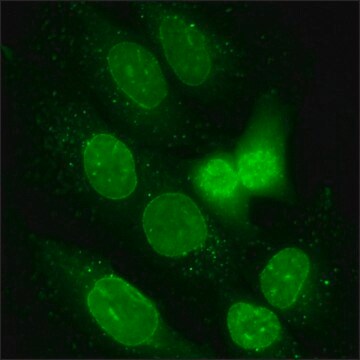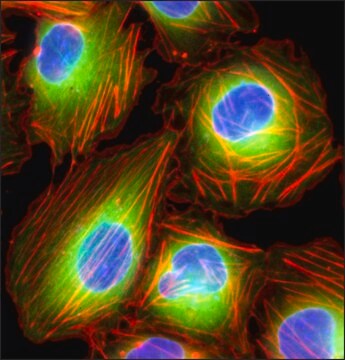U-2 OS Cell Line human
92022711, human bone, Not specified
Synonym(s):
U-2OS Cells, U2-OS Cells, U20S Cells, U2OS Cells
About This Item
Recommended Products
Product Name
U-2 OS Cell Line human, osteosarcoma, 92022711
biological source
human bone
growth mode
Adherent
karyotype
Not specified
morphology
Not specified
products
Not specified
receptors
Not specified
technique(s)
cell culture | mammalian: suitable
relevant disease(s)
cancer
shipped in
dry ice
storage temp.
−196°C
Cell Line Origin
Cell Line Description
Application
- the importance of cyclin D1 for the activity of lithocholic acid hydroxyamide (LCAHA)
- the interaction of human single-stranded DNA binding protein 1 (hSSB1) with bloom syndrome protein helicase (BLM helicase)
- calcium-mediated actin reset (CaAR) in response to physiological changes
DNA Profile
CSF1PO: 13
D13S317: 13
D16S539: 11,12
D5S818: 11
D7S820: 11,12
THO1: 6,9.3
TPOX: 11,12
vWA: 14,18
Culture Medium
Subculture Routine
Other Notes
Choose from one of the most recent versions:
Certificates of Analysis (COA)
Sorry, we don't have COAs for this product available online at this time.
If you need assistance, please contact Customer Support.
Already Own This Product?
Find documentation for the products that you have recently purchased in the Document Library.
Articles
The NTP transporter allows dUTPs to enter live cells and is an alternative to BrdU/EdU cell proliferation assays used to measure cell cycle dynamics in real-time.
Our team of scientists has experience in all areas of research including Life Science, Material Science, Chemical Synthesis, Chromatography, Analytical and many others.
Contact Technical Service

